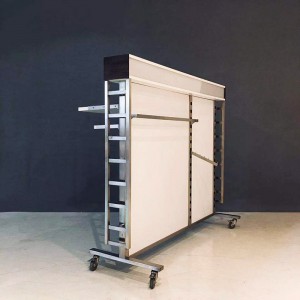सितम्बर . 16, 2024 23:31 Back to list
Shop Planning | Optimize Your Retail Space for Success
Shop Planning A Key to Retail Success
Effective shop planning is crucial for any retail business looking to thrive in today’s competitive market. It serves as a roadmap that guides the overall layout, design, and operation of a retail space. Through meticulous planning, businesses can enhance customer experiences, optimize space utilization, and ultimately drive sales.
The first step in shop planning is understanding the target audience. This involves researching customer demographics, preferences, and shopping behaviors. By gaining insights into what customers seek, retailers can tailor their store layouts accordingly. For example, a boutique selling high-end fashion will likely adopt a different approach compared to a discount grocery store. The former may emphasize display aesthetics and exclusivity, while the latter focuses on accessibility and efficiency.
Once the target audience is identified, layout design becomes paramount. An effective store layout not only guides customers through the shopping experience but also encourages impulse purchases. Common layouts include grid, racetrack, and free-flow designs, each serving specific purposes. A grid layout, typical in supermarkets, allows for straightforward navigation, while a racetrack layout leads customers around the store, ensuring they encounter a variety of products.
Zoning is another critical aspect of shop planning. This involves dividing the store into distinct sections based on product categories. For instance, placing complementary items near each other can entice customers to buy more. Additionally, strategic placement of high-demand products at the back of the store can draw customers through other areas, increasing the likelihood of additional purchases.
shop planning

The aesthetic appeal of a retail space is also a vital consideration in shop planning
. The use of color, lighting, and signage can significantly influence consumer behavior. Warm lighting can create a welcoming atmosphere, while bright colors may attract attention to specific items. Clear, informative signage not only enhances navigation but also communicates promotions and brand values.Moreover, technology integration can enhance shop planning. Digital tools such as virtual reality can help retailers visualize layouts before implementation. Additionally, data analytics can provide insights into customer traffic patterns, allowing businesses to make informed decisions regarding product placement and store design.
Effective inventory management is intertwined with shop planning. Retailers must ensure that products are adequately stocked based on demand forecasts. An efficient inventory system prevents stockouts and overstock situations, both of which can harm sales and customer satisfaction.
Finally, ongoing evaluation and adaptation are essential components of successful shop planning. Retail trends evolve, consumer preferences shift, and seasonal demands change. Regularly assessing store performance and seeking customer feedback can help retailers stay ahead of the curve and make necessary adjustments.
In conclusion, shop planning is a multifaceted process that plays a fundamental role in retail success. By understanding the target audience, designing effective layouts, and incorporating technology and aesthetic elements, retailers can create a shopping environment that not only meets but exceeds customer expectations. With careful planning and continuous adaptation, businesses can ensure longevity and profitability in an ever-changing retail landscape.
-
The Benefits of Electronic Shelf Labels for Modern Stores
NewsJul.01,2025
-
Space-Saving Retail Store Furniture Designs for Small Shops
NewsJul.01,2025
-
Slatwall vs. Gridwall: Which Store Fixture is Right for Your Business?
NewsJul.01,2025
-
Shop Fittings: Essential Elements for a Functional Retail Space
NewsJul.01,2025
-
How to Design a Minimalist Cosmetic Shop Display
NewsJul.01,2025
-
Creative Clothes Shop Display Ideas to Attract More Customers
NewsJul.01,2025


















































































































